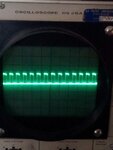boylesg
Advanced Member level 4

- Joined
- Jul 15, 2012
- Messages
- 1,023
- Helped
- 5
- Reputation
- 10
- Reaction score
- 6
- Trophy points
- 1,318
- Location
- Epping, Victoria, Australia
- Activity points
- 11,697
Apart from this 555 based buffer:
What sort of ICs can you use as a buffer in square wave switching applications?
It seems that opamp based buffers, or at least those based on the older opamp designs like LM358AN, are no good.
What sort of ICs can you use as a buffer in square wave switching applications?
It seems that opamp based buffers, or at least those based on the older opamp designs like LM358AN, are no good.



